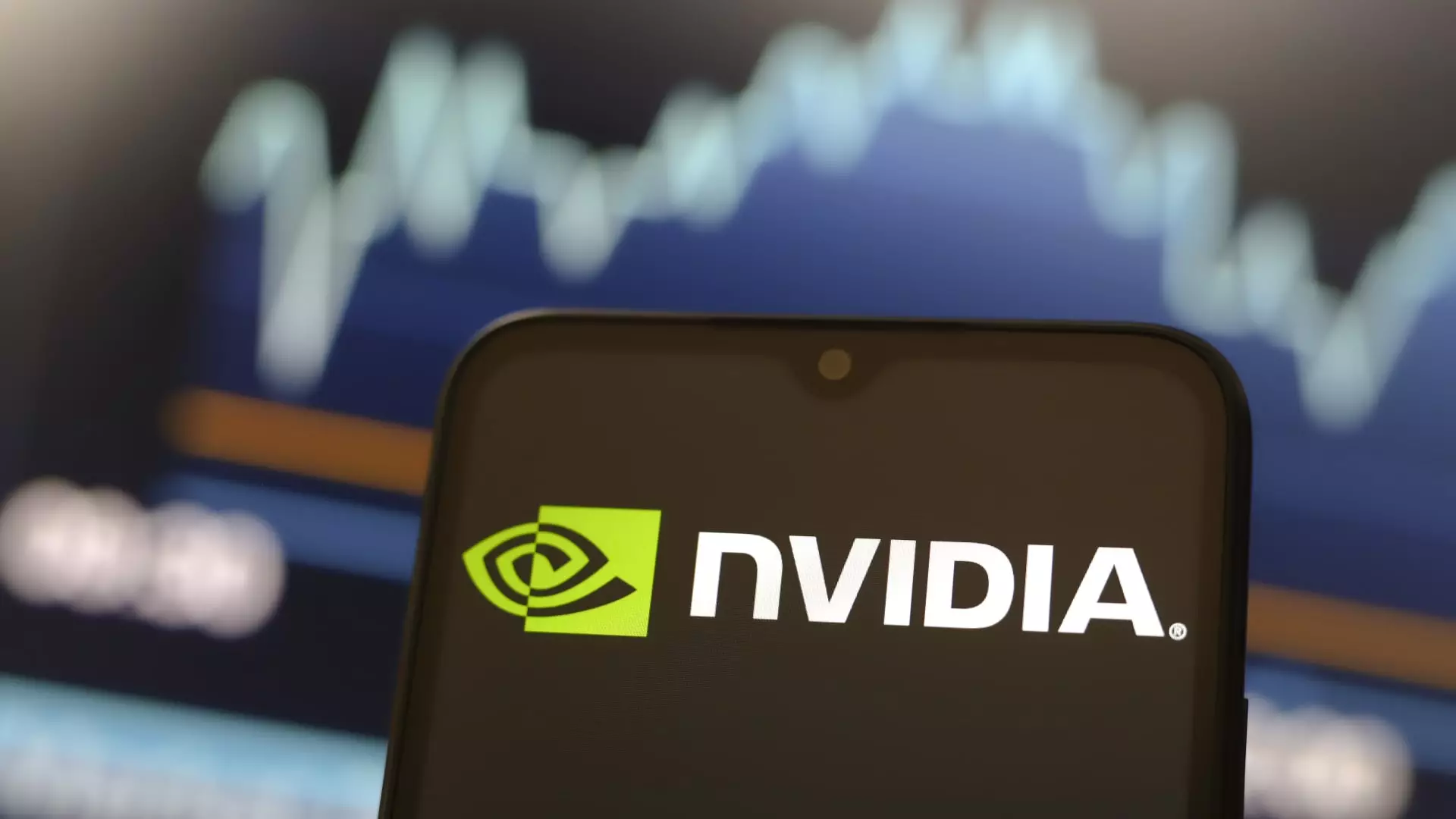Nvidia’s stock has recently experienced a downturn that has left investors pondering the future of this AI chip powerhouse. Although the Nasdaq Composite Index has reached a new peak, Nvidia has entered correction territory, with its shares down 11% from last month’s closing high of $148.88. This dramatic drop comes after a stunning 166% rise earlier in the year, driven by the burgeoning interest in artificial intelligence technologies. However, the recent performance raises critical questions about Nvidia’s long-term momentum and the broader implications for the semiconductor industry.
The term “correction” typically refers to a decline of 10% or more from its all-time high in financial markets. Nvidia officially fits into this category as it has experienced a significant price drop in December alone, with a 4.5% decrease so far. Such a volatile fluctuation highlights the precarious nature of tech stocks, particularly those heavily tied to emerging trends like AI. Market analysts contend that while Nvidia’s technology is crucial for AI infrastructure, growing competition and sector rotation could be undermining its once-impervious position.
The recent underperformance might indicate a shift in investor sentiment as Wall Street pauses for profit-taking after a remarkable year for Nvidia. With the rise of large language models and heightened demand in data centers, the stock was riding high until it faltered. Esteemed market leaders often face scrutiny during such peaks, and Nvidia appears to be no exception. The question looms: is this a healthy recalibration, or does it hint at overstretched valuations that could become problematic if they don’t align with actual market performance?
Technical analysts are closely monitoring Nvidia’s stock for critical support levels, particularly the $125 to $130 range. A failure to maintain these levels may not only threaten Nvidia’s stability but could also cast a shadow over the overall semiconductor market. Roth MKM’s insights suggest that the underperformance of Nvidia, juxtaposed against the Nasdaq’s rising fortunes, could serve as an early warning signal for potential market imbalances.
As Nvidia contemplates its positioning, other semiconductor stocks are proving to be resilient and even thriving. Broadcom, for instance, has seen its shares surge significantly, driven by optimistic earnings reports. This rush to Broadcom reflects a shift in investor focus, as many now look toward companies perceived to be in a stronger growth trajectory. Kim Forrest, chief investment officer at Bokeh Capital Partners, notes that the recent comments from Broadcom have rekindled momentum interest, placing added pressure on Nvidia as more investors seek “higher flyers” for potentially faster returns.
The broader semiconductor landscape appears robust, with players like Micron Technology and Marvell Technology also experiencing upward trends. Micron, for example, spiked approximately 6% ahead of its anticipated quarterly results, indicating that investors may be diversifying their portfolios in search of stability. Conversely, Nvidia’s struggles could signify an important sector-wide shift, where the dominance of established names is being challenged by emerging competitors. Investors are keenly observing how this industry dynamic unfolds in the coming months.
The question for Nvidia is whether it can regain its footing or if it will be seen as a past success story in the hyper-competitive AI and semiconductor landscape. As companies pivot to engage with dynamism and innovation, the current trend could lead to a reevaluation of Nvidia’s market worth and strategic positioning. The excitement surrounding artificial intelligence has not waned, but the turbulence in Nvidia’s stock raises several critical considerations for investors and stakeholders alike.
As analysts parse through the data and market trends, the next steps for Nvidia will be crucial—not only for the company itself but for the health of the semiconductor sector as a whole. The coming weeks and months will ultimately reveal whether Nvidia can adapt and overcome its recent challenges, or if it will continue to slip in a market that is always eager for the next big player.

